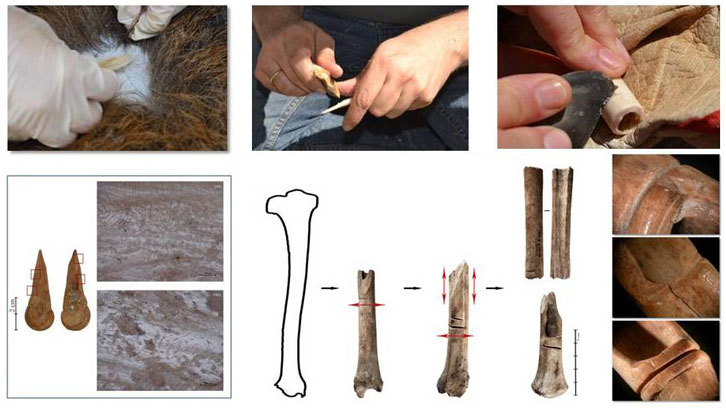Technological and Functional Study of Tell Halula Settlement (Euphrates Valley, Syria)

The research developed in the doctoral thesis has focused on the study of Bone tool one of the better known in the Neolithic sites in the Levant, tell Halula (Euphrates Valley, Syria), in its historical and archaeological context. The Neolitization is a key period in human history, and its study in the region of the Near East is of particular importance because of its early chronology and good preservation of archaeological sites.
Since the late 1960s to the 1990s, a significant increase in bone tool studies occurred. They were provided with a greater emphasis on the technical aspects, followed by a new focus on raw materials, technology, functionality and experimentation, thus opening up new paradigms in the perception of the Neolithic.
Figure 1: Tell Halula site.
The main objective of this study has been to obtain an overview of the tools’ life from the obtainment of raw materials to their abandonment. This perspective of study on the materials has allowed us to formulate hypotheses regarding the collection and use of resources, and the introduction of technical innovations in the historical and geographical context studied.
With this essential objective, a database was created, which documented all available information for each object from the study of variables such as raw materials, the analysis of the different techniques of manufacture, the typological classification of objects and finally, the study of the use of artefacts. For this purpose traces were studied of the manufacturing and usage, both on macroscopic and microscopic levels, implemented through different types of microscopes, and in association with an experimental program. The combination of the two types of analyses allowed us to go into a more detailed and deepened analysis of the role of bone tools in the first agricultural societies.
This method of analysis has permitted the proposition of hypotheses on techniques and manufacturing methods, as well as on the participation of useful bone in different craft areas (skin work, pottery production, etc.). According to the study carried out, our experiments have tried to evaluate the previous ideas, comparing experimental data with archaeological, and finally, trying to differentiate between manufacturing and the traces of use, as well as the value of diversity usage of each object until it’s abandonment.
Moreover, we emphasise that the ultimate aim of this work has been to understand the cultural and social dynamics that occurred in the site, through the evolution, cultural and functional representation of bone tools. In Europe, it has been shown that bone tools act as a strong cultural and chronological indicator. Following this line of research, our work has shown that the site of Tell Halula allows to distinguish this type of indicators between the Neolithic period PPNB, Pre-Halaf and Halaf. Finally, and at another level of analysis, it has shown the relationship with other communities in the middle of the Euphrates River Valley and the southern Levant, from the production and organization of the productive forces of these industries. It is in this sense that we can say that it has filled the vacuum of studies on bone tools in this primordial region of the Neolithization process.
References
“Industria ósea en el neolítico del próximo oriente. Estudio tecnológico y funcional del asentamiento de tell Halula (Valle del Éufrates, Siria)”, Buchra Taha PhD thesis, supervised by Miquel Molist Montaña and Isabelle Sidéra and read at the Department of Prehistory.

